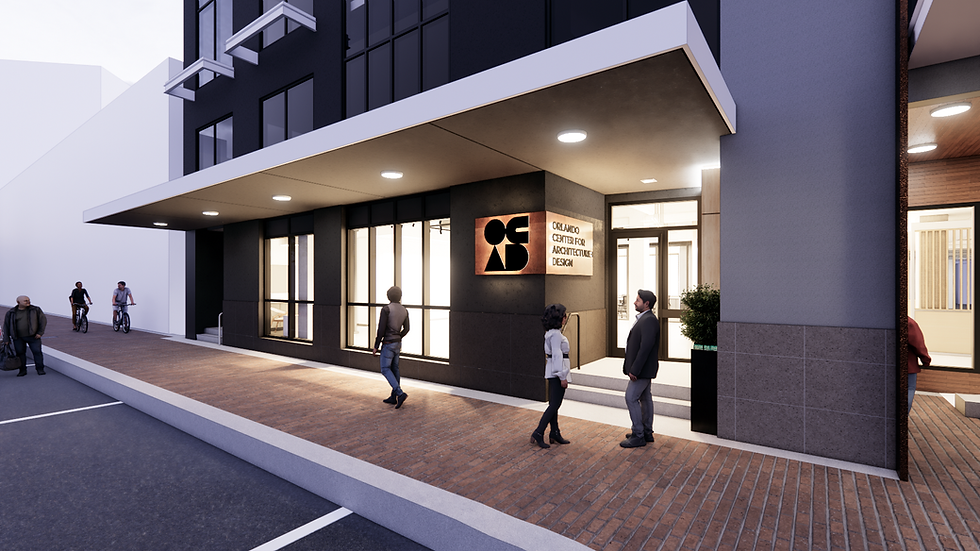Expanding Access to Design Excellence: The History of UF’s 2+2+2 Architecture Program
- The Orlando Foundation for Architecture
- Jul 28
- 3 min read
Updated: Jul 30

Florida’s architectural education landscape, defined by six NAAB-accredited schools, has evolved over nearly a century to meet the state’s diverse design needs. The University of Florida (UF) in Gainesville, The University of Miami (UM) in Coral Gables, Florida A&M University (FAMU) in Tallahassee, The University of South Florida (USF) in Tampa, Florida Atlantic University (FAU) in Fort Lauderdale, and Florida International University (FIU) in Miami have trained generations of architects.
However, as Florida’s population grew and the profession expanded into major metropolitan areas like Orlando, the absence of a professional architecture program in Central Florida became a pressing issue. John Ehrig, FAIA, a UF architecture alumnus and former AIA Florida and AIA Orlando president, was among those who recognized this issue. In 2008, Ehrig, alongside AIA Orlando’s Educational Task Force, began advocating for a regional solution to reduce the educational “transfer gap” and retain local talent within the Orlando community.
From Vision to Reality: The Architects of the 2+2+2 Pathway
Ehrig and the Task Force, with strong support from community leaders like Valencia College President Dr. Sandy Shugart, began shaping a bold proposal: a collaborative program that would allow students to progress through three institutions—Valencia College, UCF, and UF’s CityLab-Orlando—earning a full professional degree without ever leaving Central Florida.
This idea, formalized in a white paper and presented to academic and institutional stakeholders, envisioned an educational pathway that:
Began with an Associate in Arts in Architecture at Valencia College,
Progressed to a Bachelor of Design in Architecture at UCF, and
Concluded with a Master of Architecture from UF’s off-campus graduate studio at CityLab-Orlando.
Instrumental in this plan’s success was Dr. Frank Bosworth, Ph.D., AIA, who was recruited as CityLab-Orlando’s founding director. With more than 30 years of teaching experience and a vision for urban, context-sensitive design education, Bosworth helped bring the CityLab concept to life in 2012. Under his leadership, the first cohort of graduate students enrolled that fall and graduated in 2014—with nine of the sixteen graduates having come through the full 2+2+2 pipeline.
Florida’s Architectural Education Landscape

A Regional Impact with Global Opportunities
The 2+2+2 model is more than a logistical convenience—it’s an educational ecosystem. Students build their academic journey incrementally, earning respected credentials along the way while staying embedded in Central Florida’s growing design community. The model encourages real-world experience, offering opportunities for internships and professional mentorship at each stage.
Importantly, the UF Master of Architecture program offered at CityLab-Orlando mirrors the curriculum of the Gainesville campus while incorporating flexible scheduling and hybrid instruction. With the support of local firms and the broader AIA community, students are often employed while earning their degrees—a crucial element in UF’s successful participation in NCARB’s Integrated Path to Architectural Licensure (IPAL) initiative.
Today, more than 90% of CityLab-Orlando students are employed in professional practice while pursuing their degrees. The program has not only retained talent in the region but has produced licensed architects, urban innovators, and community leaders, all educated in the very city they now help shape.
Looking Forward
In 2024, UF CityLab-Orlando celebrated its 10th anniversary, marking a decade of impact, access, and innovation. With a new director, Stephen Bender, now leading the program, the legacy established by Ehrig, Bosworth, and their collaborators continues to thrive.
As Ehrig reflected, the program’s success has been no accident:
“Too many things fell into place at just the right time for us mortals to take all the credit.”
From securing funding through the Dr. P. Phillips Foundation, to the development of Valencia’s Studio 9, to the seamless academic articulation agreements, the program represents a confluence of vision, persistence, and purpose.
In an era when access to education, affordability, and professional alignment are more important than ever, Central Florida’s 2+2+2 architecture pathway remains a model of community-rooted innovation—helping students build their careers, their cities, and their future, right where they started.



